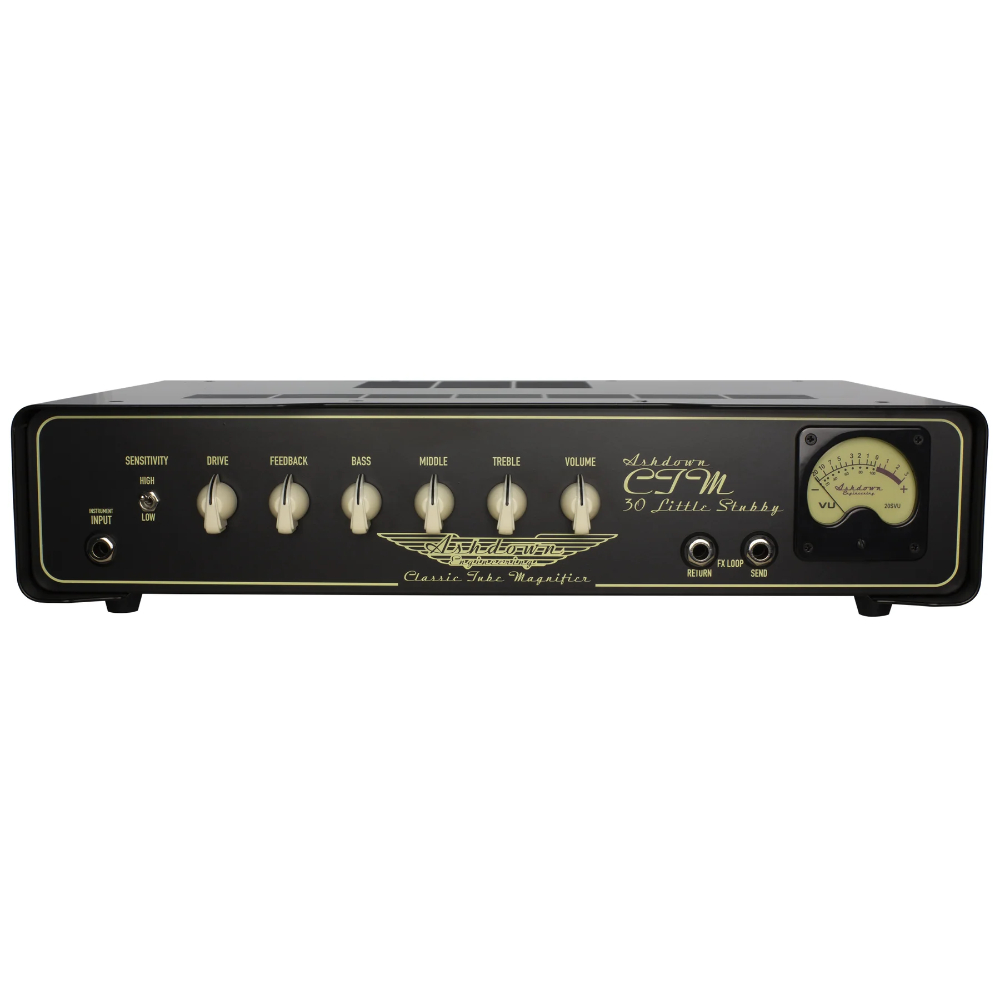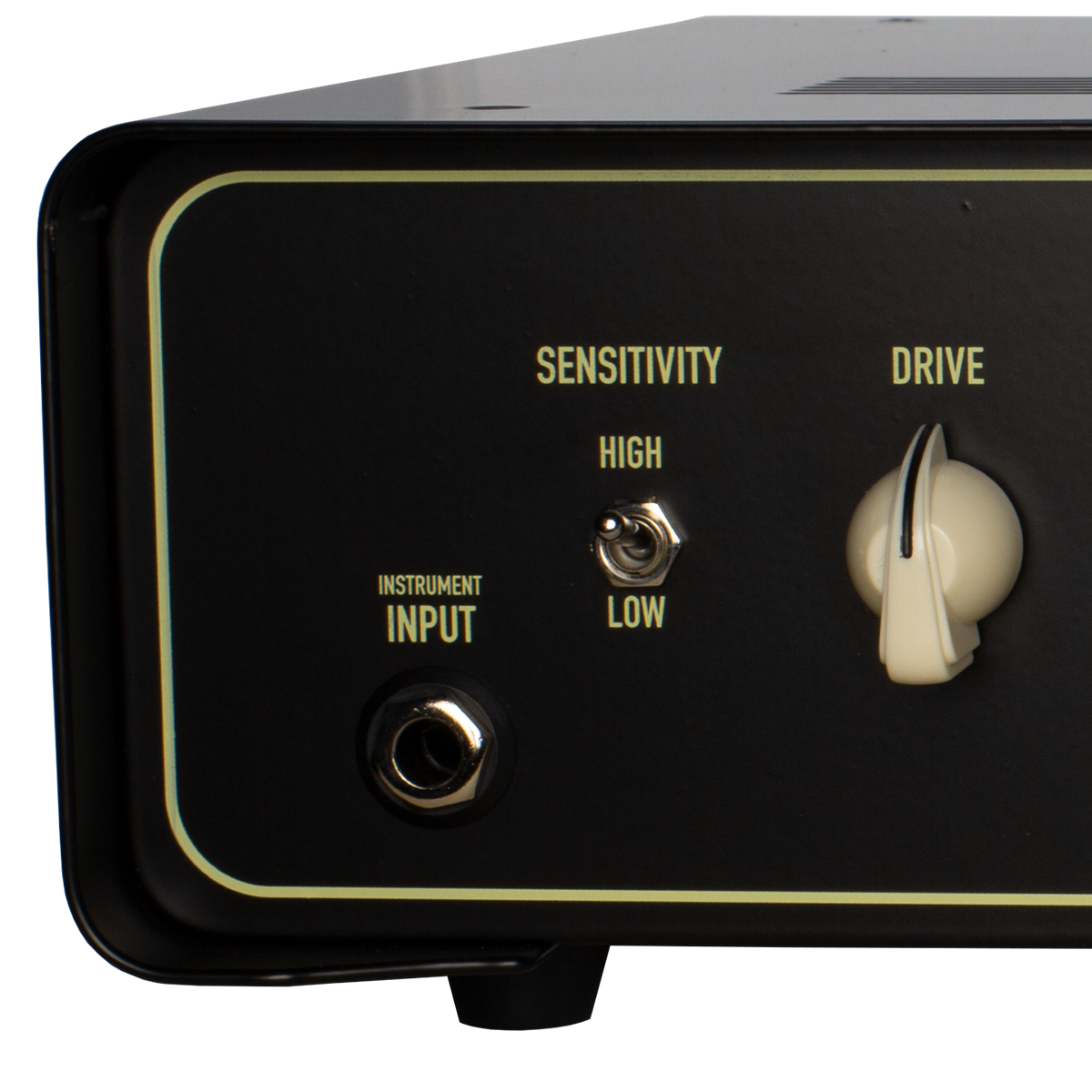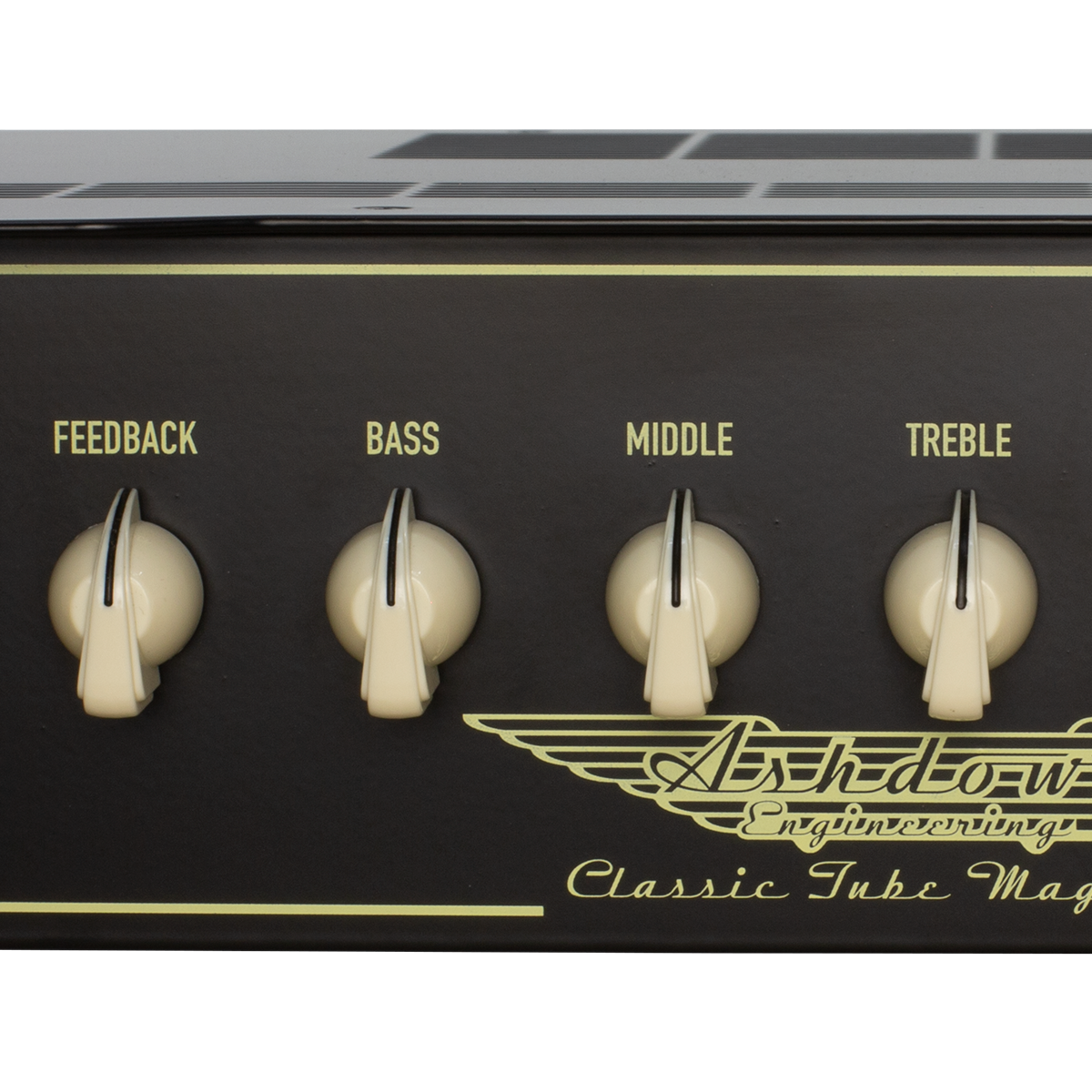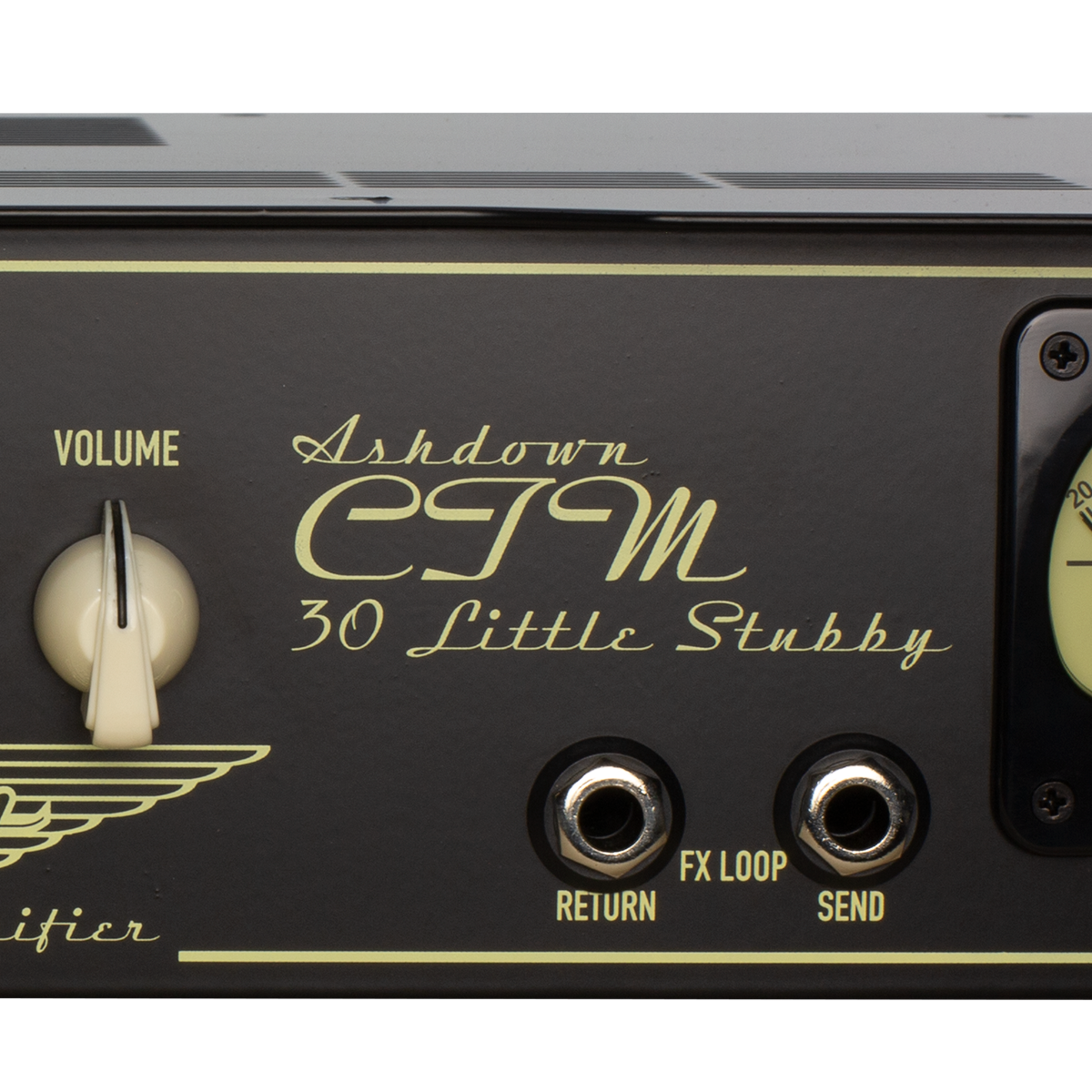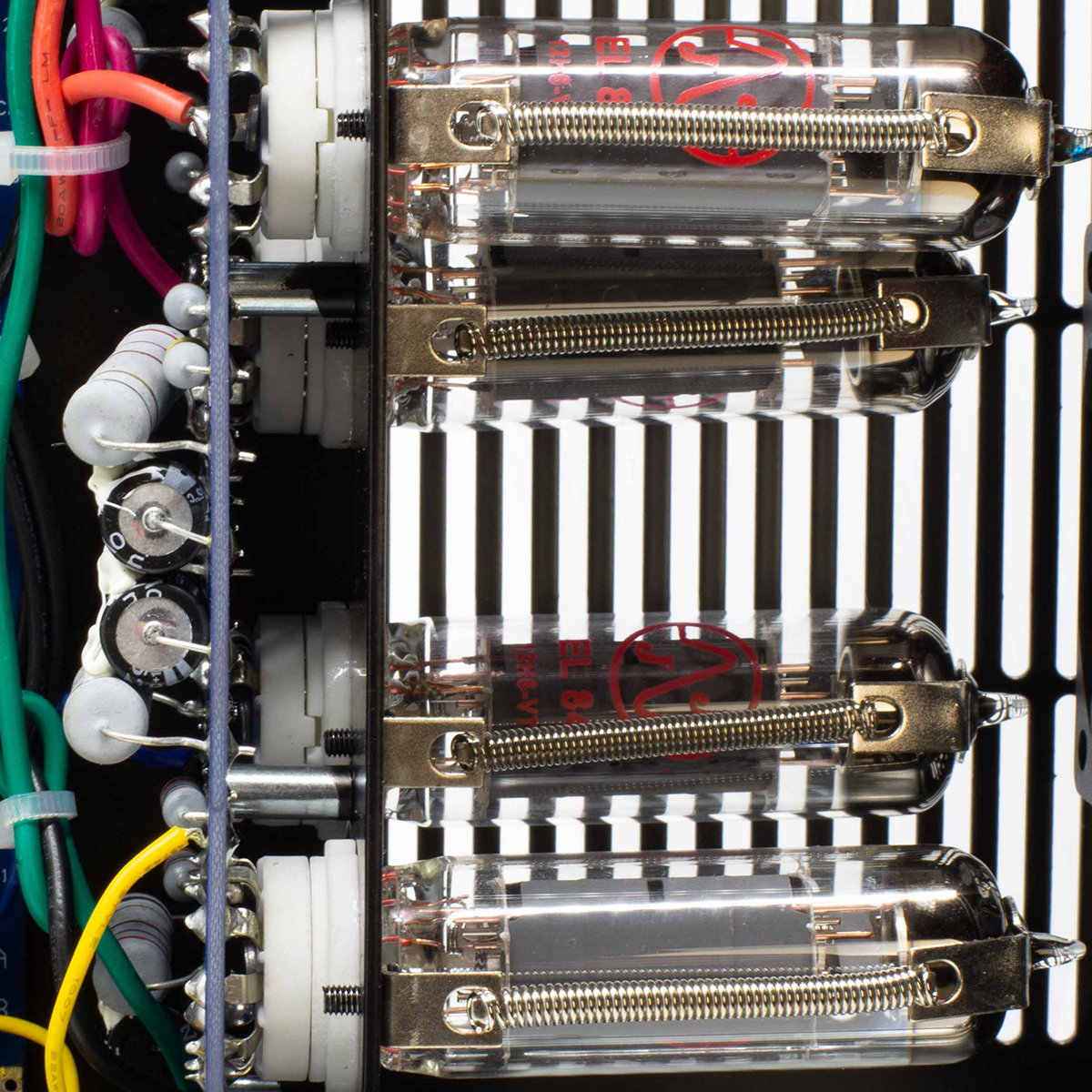ASHDOWN – CTM 30-LITTLE STUBBY – Amp Head
The CTM-30 Little Stubby head represents the latest technological advance in Ashdown’s iconic CTM (Classic Tube Magnifier) series.
Tube bass amps are really something special. They have the warmth, punch and harmonic richness that transistor amplifiers can all too rarely match. In contrast, tube amps are traditionally big, heavy and bulky.
The Little Stubby breaks new ground in tube amp design with its novel compact enclosure, breaking away from the heavy, bulky devices of yesteryear.
Producing 30 watts from 4 EL84 tubes, the Little Stubby offers great purity of sound and real versatility. The input gain and master volume allow for a gradual transition from a clear, deep sound to modern, highly saturated sounds.
But the real attraction here is the unique FEEDBACK control that allows you to adjust and completely change the character of the amp to achieve :
on the one hand, old school vintage tube amp sounds,
on the other hand, modern, cleaner and heavier sounds.
Combine this with the efficiency of the three-band EQ, and the variety of sounds is almost limitless. The effects loop adds to the sonic purity by allowing your favourite modulation effects to be fed directly into the power amp.
- Low sens Nominal 300mV @ 22k impedance (suitable for Active instruments)
- Totally passive 3 band EQ
- Feedback control
- Output power 30 watts continuous
- 1 x ECC81, 1 X ECC82, 2 x ECC83 preamp valves
- Zero negative feedback
- Steel chassis construction
- Self biasing
The CTM-30 Little Stubby marks the next developmental leap in the Ashdown valve bass amplification bloodline. Improved tone, features, portability and versatilty make the Little Stubby a new icon in the all valve bass amplification market.
Measuring just 400 mm wide, 235 mm deep and 95 mm tall, the CTM-30 Little Stubby brings a classic all-valve tone in a compact and more portable gig-ready head.
The unique Feedback control allows the character of the amp to be changed and fine tuned from old school vintage valve amp tones at one end through to tighter more mid heavy modern tones at the other.
The Ashdown CTM-30 Little Stubby has an upgraded 30-watt EL84 driven power section and features a single instrument input with hi and low input sensitivity selector switch, for use with active or passive basses. The amp combines traditional ‘Bass, Middle and Treble’ rotary EQ control with a familiar Volume, Drive and unique Feedback control to accomplish both contemporary and classic all-valve tones from its ECC81, ECC82 and ECC83 preamp valves. It’s extremely easy to finding the gain ‘sweet spot’ on the Little Stubby – producing a warm, full-bodied overdriven sound.
The Little Stubby features a balanced transformer derived DI output. Perfect for studio recording or for live performances where you need to get pure DI signal to the desk with a minimum hassle. If you want to use your favourite pedals or multi-effects, you’ll find conveniently located send and return sockets on the front panel.
A duo of ¼” Jack sockets provides flexible partnering options with a range of Ashdown speaker cabinets at 4-ohm (minimum) or 8-ohm.
